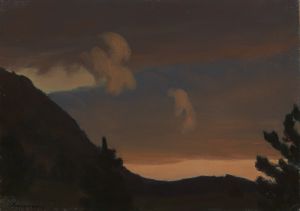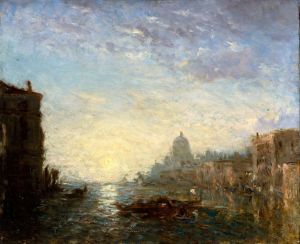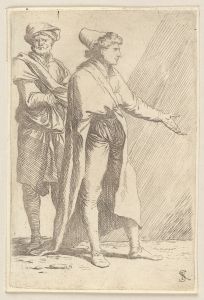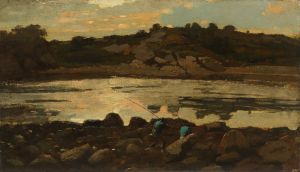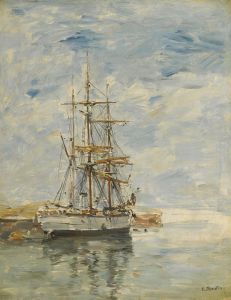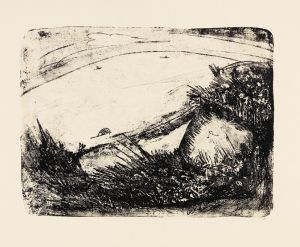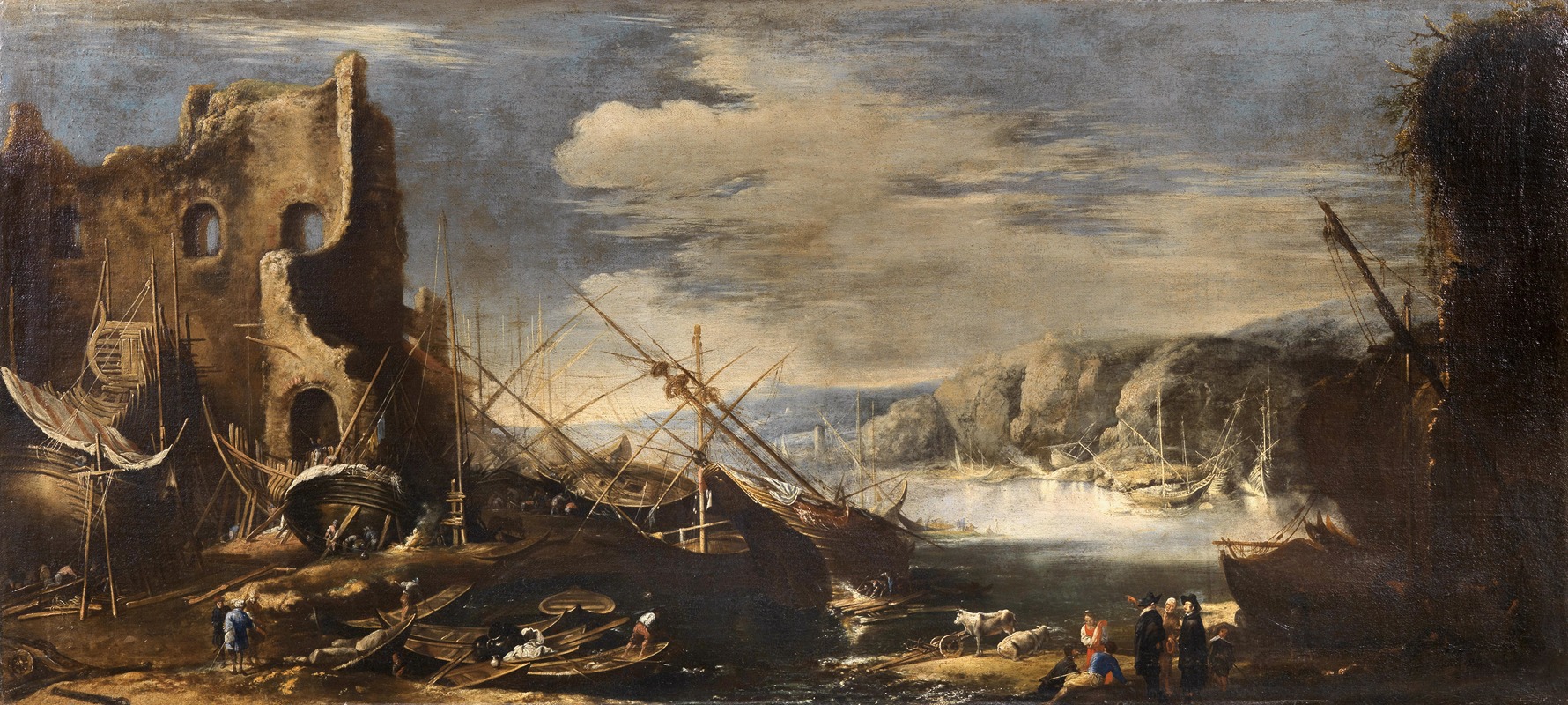
A coastal landscape with shipwrecks and ruins
A hand-painted replica of Salvator Rosa’s masterpiece A coastal landscape with shipwrecks and ruins, meticulously crafted by professional artists to capture the true essence of the original. Each piece is created with museum-quality canvas and rare mineral pigments, carefully painted by experienced artists with delicate brushstrokes and rich, layered colors to perfectly recreate the texture of the original artwork. Unlike machine-printed reproductions, this hand-painted version brings the painting to life, infused with the artist’s emotions and skill in every stroke. Whether for personal collection or home decoration, it instantly elevates the artistic atmosphere of any space.
Salvator Rosa (1615–1673) was an Italian Baroque painter, poet, and printmaker known for his unorthodox and often dramatic landscapes, as well as his rebellious personality. One of his notable works is "A Coastal Landscape with Shipwrecks and Ruins," which exemplifies his unique approach to landscape painting during the 17th century.
Salvator Rosa was born in Arenella, near Naples, and he initially trained under his uncle, Paolo Greco, and later with the painter Francesco Francanzano. He moved to Rome in the 1630s, where he became associated with a group of artists and intellectuals who were critical of the academic conventions of the time. Rosa's work is characterized by its dramatic and often tumultuous scenes, which were a departure from the more serene and idealized landscapes popular during the Baroque period.
"A Coastal Landscape with Shipwrecks and Ruins" is a quintessential example of Rosa's style, featuring a rugged and dramatic seascape. The painting depicts a tumultuous coastal scene with shipwrecks and ancient ruins, emphasizing the power and unpredictability of nature. Rosa's landscapes often include elements of the sublime, a concept that evokes both awe and terror, and this painting is no exception. The inclusion of shipwrecks suggests themes of human vulnerability and the destructive force of the sea, while the ruins hint at the passage of time and the inevitable decay of human creations.
Rosa's use of dark, moody colors and dynamic compositions enhances the dramatic effect of the scene. His brushwork is expressive, capturing the movement of the waves and the ominous sky. The painting reflects Rosa's interest in the wild and untamed aspects of nature, which was a departure from the more controlled and harmonious landscapes of his contemporaries.
In addition to his work as a painter, Salvator Rosa was also a poet and satirist. He often used his art and writings to critique the political and social issues of his time. His rebellious spirit and disdain for authority are evident in his choice of subjects and his unconventional approach to painting. Rosa's landscapes, including "A Coastal Landscape with Shipwrecks and Ruins," can be seen as a reflection of his independent nature and his desire to challenge the status quo.
Rosa's influence extended beyond his lifetime, and his work was admired by later artists who appreciated his dramatic style and the emotional depth of his landscapes. His paintings have been studied for their innovative approach to composition and their ability to convey complex themes through the depiction of nature.
Today, "A Coastal Landscape with Shipwrecks and Ruins" is recognized as an important work in Rosa's oeuvre, showcasing his skill as a landscape painter and his ability to capture the sublime beauty and inherent danger of the natural world. The painting remains a testament to Rosa's unique vision and his contribution to the development of landscape painting during the Baroque period.





